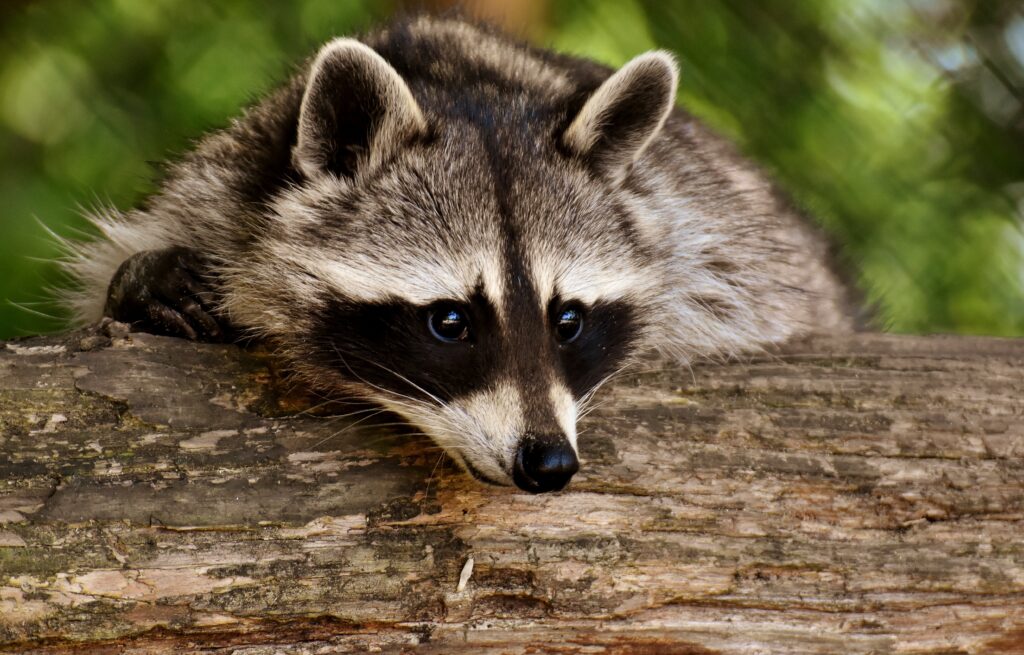Raccoon
Procyon lotor

PRESENTATION OF THE SPECIES
Scientific name: Procyon lotor
Origin: North America
Presence in the Caribbean: Established populations in Guadeloupe, with records in other islands (Cuba, Dominica, the Bahamas)
Size: 40 to 70 cm (body), tail 20 to 40 cm
Weight: 4 to 9 kg on average
Diet: Opportunistic omnivore (invertebrates, small vertebrates, eggs, fruits, human waste)
The raccoon in the Caribbean
Introduced several centuries ago to some Caribbean islands, the raccoon is now well established in the region, particularly in Guadeloupe. Recognizable by the black “mask” around its eyes, the species is often considered charismatic.
Controlling raccoon populations is challenging due to their social perception. Seen by many as a symbolic or attractive animal, raccoons benefit from cultural tolerance, which complicates management actions. This highlights the need for awareness campaigns to better inform the public about their real ecological and sanitary impacts.
Raccoons have a varied diet (including small vertebrates or juveniles, invertebrates, carrion, and fruits) and are potential carriers of pathogens, representing an underestimated ecological and sanitary threat in the Caribbean.
What is CIMBA doing?
Within the CIMBA project, raccoons are among the targeted species: their presence and activity in protected areas are being monitored with camera traps, their impacts are assessed through biodiversity surveys in areas where they are established, and awareness campaigns are carried out to inform local communities about the ecological and sanitary risks they pose.
